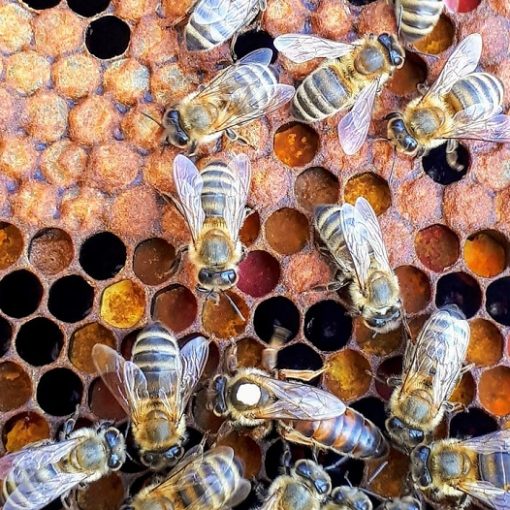Providing the best food for your dog can be a tedious process. Choosing a healthy food that gives your pup all the nutrition they need is highly important. To keep your dog’s coat, teeth and weight in optimal condition, you want to choose smartly. Skeletal health and your dog’s overall energy level is also of importance.
What to Look For
Many pet owners simply reach for the cheapest product available. Or, the one with the prettiest packaging. This is not the best practice if the health of your dog is your top priority. You’ll want to carefully read the ingredient lists on each product. Also, look for icons that notify you whether there are preservatives and additives that make the food last longer but come at a price.
Often, the healthier the food, the more expensive it is. But this is not always the case. There are many good options available for affordable brands that contain healthier alternatives.
Things to Keep in Mind
- Take your time to read the labels on the packaging. By law, the food companies must inform you about the ingredients. Pay attention to how simple the ingredients are on healthier foods.
- Make sure you’re getting a food that is age appropriate for your dog. Adult dog food is very different than puppy food.
- Look for a label that says no artificial ingredients or no artificial preservatives. These preservatives are used to keep food fresh longer but are unhealthy for your doggy.
- to choose a grain-free food whenever possible. This will ensure easier digestion for most breeds.
- Look for an actual mention of what type of meat is included. Don’t settle for a dog food that just states that it contains meat. If it is natural, they will specify which types of meat are used.
Know Your Dog
Furthermore, with so many breeds, it can be challenging to find the right fit. Some foods are geared specifically for certain breeds. Some dogs have sensitive stomachs while others need stronger muscle development. However, there are some best practices for choosing an all-around healthy dog food.
Below, we’ll discuss some major points that you’ll want to keep in mind. Regardless of the breed of your dog, these best practices will help you select an overall healthy food. Though you might want to narrow the search by what your dog’s breed prefers, this is a great place to start.
It’s All About Ingredients
Most experts agree, foods containing natural meats and no added fillers are the best way to go. The nutrition and overall health benefits of whole foods provide the best sustenance for your little family member. Many foods use extra additives to bulk up the contents of their products. The best dog foods will not contain these fillers and instead contain natural, wholesome ingredients.
Products that contain real meat are the best option for dogs. However, you’ll want to be careful with the food’s label when making your decision. Many products tout using meat ingredients but don’t specify which meat it is. Look for a food that lists exactly what meat products are included. It should clearly say that one of the ingredients is chicken or beef, or another meat. Not simply that meat is included in the ingredients. This will help you ensure that the animal products in the food are authentic and will provide the best possible nutrients for your pup.
Vegetables are another important ingredient. Look for a dog food that lists specific vegetables on the ingredient list. The nutrients gathered from vegetables are just as important for dogs as they are for humans. Most vegetables are good for dogs and provide valuable benefits. That said, corn and grains can be especially harsh on your dog’s stomach. These products are used often to bulk up the contents of food but come at a price. Many dog’s stomachs can be irritated with grain products and produce painful gas. Try to look for a product that is grain free for the best possible health benefits.
Often, you’ll see dog food products that state it contains no fillers. This is also something you’ll want to look for. Fillers, like cereal products, are also used to increase the volume of the food but provide little or no nutritional value. Foods with no fillers are more likely to use that extra space to provide real ingredients that contain more vitamins and meats.
Many foods that are geared for pets contain unhealthy, artificial preservatives. Preservatives are used to extend the expiration date on the food but include chemicals that are one of the leading causes of dog illnesses. Look for a food that states it contains no artificial preservatives. This will limit the duration you can keep the food fresh but will provide a much healthier meal time for your dog.
Which Is Which
Another important factor in choosing your dogs food, is whether you’re feeding a puppy or an adult dog. The ingredients and health benefits vary drastically depending on the age range the food is prepared for. For puppies, many vitamins and supplements are added to promote healthy growing and cognitive development. For example, DHA is often added to puppy food to assist them in developing a healthy brain and nervous system. Furthermore, ARA, a substance found in mother’s milk, is often included in the ingredient list. This helps to promote the natural nutritional values that would be found if the puppy was still nursing.
For adult dogs, the ingredient list will vary quite a bit from those made for puppies. Calcium support as well as supplements like glucosamine to provide bone support are added. Vitamins A and D are also very important to a fully-grown dog’s diet.
Large or Small Breeds
Within the differentiation between adult dog food and puppy food is another important distinction. Whether your dog is a large or small breed is of crucial importance for the ingredient list. If there is too much calcium in the food, your dog’s bones can grow too fast making for problems during and after development. If there is not enough, your dog’s skeletal system can be weakened and not age well.
Look for a food that is geared specifically for the breed size of your dog. If will almost always specify which one the food is prepared for. There is often a chart included on the packaging to help you decide which class your dog falls among.
Final Thoughts
Taking the time to read the packaging and consider the points mentioned above will help provide your dog with the best health benefits. Whether it’s bagged or canned dog food, regulations require companies to provide you with as much information as possible. Choosing the right food for your pup is crucial for providing the needed nutrients and energy levels for overall health and comfort. Research what ingredients are especially good for dogs. For example, cinnamon is good for a dog as well as other natural ingredients that they benefit from. Though your dog can’t thank you in the traditional sense, they will certainly be grateful for the extra care you took to provide a healthy meal. If you choose a good food, geared for your dog’s needs, you will notice increased energy levels as well as a healthier appearance.





